By Sally Siko



By Sally Siko
Had a nice morning birding in Raleigh last month!
With autumn migration in full swing it’s nice to catch a good look at all of the pretty little warblers moving through the area.
One of my favorites is this Northern Parula. I was stoked to finally photograph one in a maple tree, ablaze with fall color.

These little birds are absolutely beautiful if you’re lucky enough to get a close up look at one. It isn’t easy though as Parulas tend to forage in the treetops during the summer months. That being said, now that autumn has arrived their behavior has changed as they begin to hunt for their meals a little lower towards the ground.






Measuring just 11.4 cm, Northern Parulas are one of North America’s smallest species of Warbler and due to their energetic habits they can be tough to see or photograph. Happily though, they do respond well to pishing and will sometimes swoop in close to you to get a better look at who’s making all that swoooshing noise.
Parulas breed across the eastern United States and north up into eastern Canada.
They favor habitats in swamps and wooded wetlands where Spanish Moss is present as this is their preferred nesting material.
Though they can be tough to actually see in the dense leafy canopy’s of the treetops you can certainly find them by listening for their distinctive buzzy trill call from above.
The Northern Parulas will only stick around NC for about a week or two so you’ve still got a little time to enjoy them before they head south for the winter.
Photos by @sally_siko of @bestlife_birding captured on my mighty mirrorless monster, the @canonusa #R5
By Sally Siko
Here’s are a couple close up looks of one of my favorite birds, the Northern Parula.
These little ones seem to be everywhere this time of year here in North Carolina.
Aren’t they beautiful?

Though they are tiny (only about 4.5in long!) their relatively easy to find by listening for their high pitched buzzy zeee-zip calls in the mid to high canopies of the trees.
They also respond well to pishing and will sometimes swoop in down low so that they can get a better look at who’s making all that swoooshing noise.
These lovely feathered gems nest over nearly all of the eastern United States and Canada, and not surprisingly it nests in all parts of North Carolina.
Parulas are most commonly spotted in swamps and bottomlands, especially where growths of Spanish moss are found hanging from the trees (their favorite nesting material).
As for the rest of the state, Parulas favor other moist forests and woodlands, such as cove forests; occasionally it does nest in drier forests too.
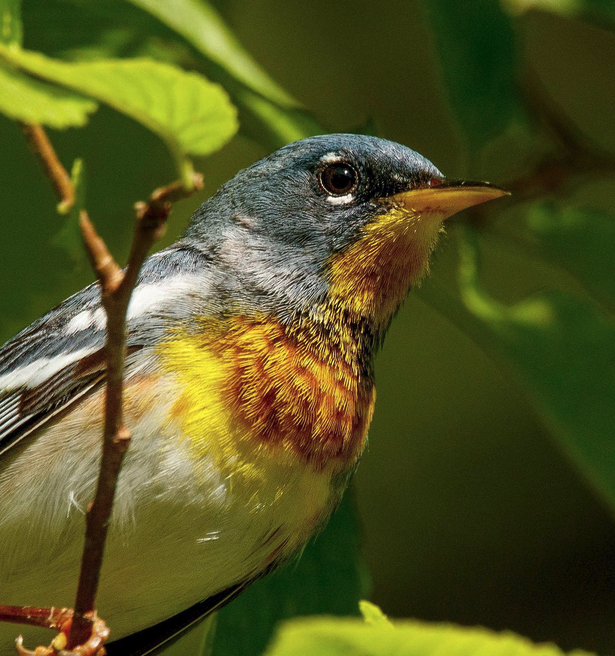
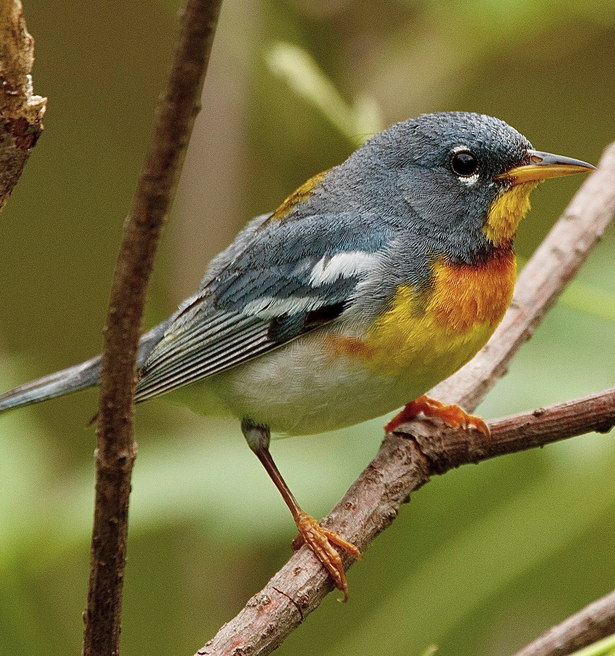
Leaving in mid October, most Northern Parulas will spend the winter south of the United States. That being said there are a handful of them which will stick around the Tarheel state through early winter so you still have plenty of time to get out there and enjoy them this year!
Photos by @sally_siko of @bestlife_birding on my beloved full frame 50MP beast, the mighty @canonusa #5Ds
With spring migration right around the corner, some early arrivals are slowing filtering into the Tarheel state such as the Northern Parula.
I was pleased to photograph this one at Bynum Bridge in Pittsboro NC this past weekend.
It was a real joy to lay eyes on this beautiful species of warbler as he searched for a six legged snack in the trees.
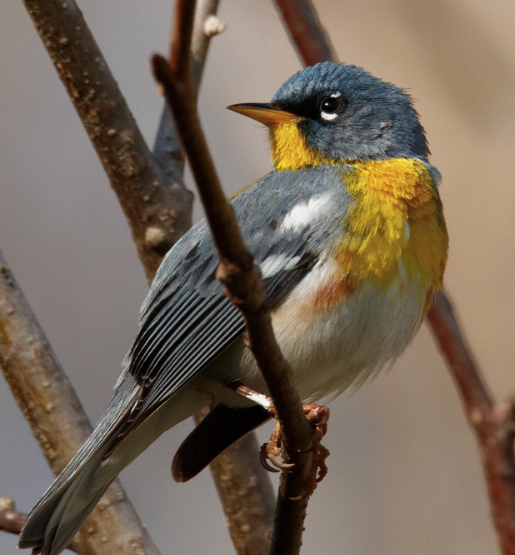
Measuring just 11.4 cm, Northern Parulas are one of North America’s smallest species of Warbler and due to their energetic habits they can be tough to see or photograph. Happily though, they do respond well to pishing and will sometimes swoop in close to you to get a better look at who’s making all that swoooshing noise.
Parulas breed across the eastern United States and north up into eastern Canada. They favor habitats in swamps and wooded wetlands where Spanish Moss is present as this is their preferred nesting material.
Though they are found throughout NC, I’ve had the best luck in finding them in our southeastern coastal counties and especially around the Wilmington area.
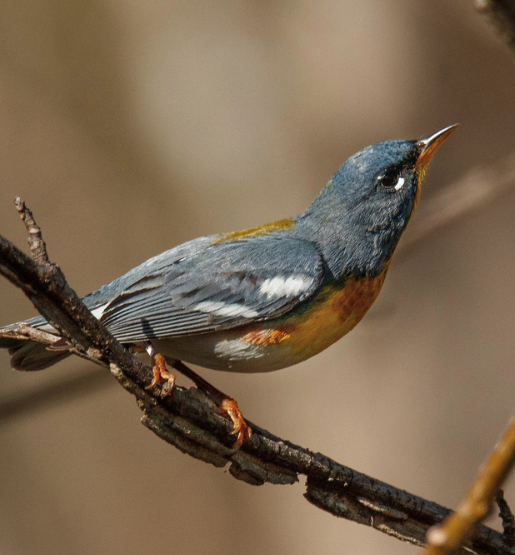



Though they can be tough to actually see in the dense leafy canopy’s of the treetops you can certainly find them by listening for their distinctive buzzy trill call from above.
The Northern Parulas will stick around NC through early October so we’ve got plenty of time to enjoy them this year before they head south for the winter.
Photos by @sally_siko of @birdwatching_nc on my beloved full frame 50MP beast, the mighty @canonusa #5Ds
One of our most colorful part time avian residents of NC is the Northern Parula.
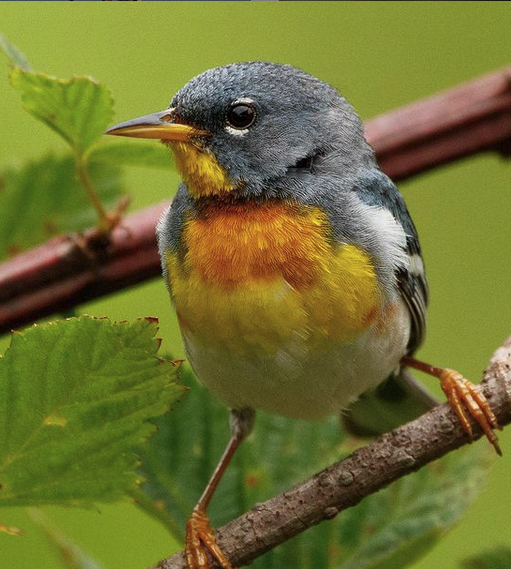
These little birds are absolutely beautiful if you’re lucky enough to get a close up look at one. It isn’t easy though as Parulas tend to forage in the treetops during the summer months. That being said, once autumn arrives their behavior changes as they begin to hunt for their meals a little lower towards the ground.
I spotted this one at Yates Mill Park and was pleased that he stopped moving around long enough for me to grab a couple pics.


Measuring just 11.4 cm, Northern Parulas are one of North America’s smallest species of Warbler and due to their energetic habits they can be tough to see or photograph. Happily though, they do respond well to pishing and will sometimes swoop in close to you to get a better look at who’s making all that swoooshing noise.
Parulas breed across the eastern United States and north up into eastern Canada. They favor habitats in swamps and wooded wetlands where Spanish Moss is present as this is their preferred nesting material.
Though they can be tough to actually see in the dense leafy canopy’s of the treetops you can certainly find them by listening for their distinctive buzzy trill call from above.
The Northern Parulas will only stick around NC through early October so you’ve still got a little time to enjoy them before they head south for the winter.
Photos by @sally_siko of @birdwatching_nc on the mighty @canonusa
#5ds
By: Sally Siko- Admin Birdwatching NC
One of the things I enjoy most about birding is the research done ahead of time that’s often needed when pursuing a new species.
The first place to start is to learn about the kinds of habitats the bird favors and pick someplace on the map where these places exist.
From there it’s time to turn my attention to the season at hand and match up the habitat requirements with the month and location.
Then it’s off to try and find out more about the birds diet, migratory movements, seasonal plumage changes and nesting habits.
Once those things are locked in, off I’ll go to see if I was right in understanding the data.
While I’ve come up empty on numerous occasions, just often enough (lol) I am able to find the bird I’ve been looking for.
While it’s thrilling to see and photograph something new, I am so in love with the learning process done ahead of time and in the field that adds an extra layer of fun to the experience.

Case in point, this gorgeous Northern Parula I recently spotted at Airlie Gardens in Wilmington NC.
This feathered gem’s favorite nesting material is Spanish Moss growing on trees in places near water. Here in the far southeastern region of NC, we’ve got plenty of that (plus tons of tasty insects for them to eat) so it’s reasonable to expect to find one or two in this area on any given day during the breeding season. In fact, my group and I saw a few of them during our trip which was just wonderful!
Another thing I noticed about the Parulas (for the first time actually) is how perfectly suited their yellow, white and grey plumage is for blending in with the sun dappled and shadow foliage of the Magnolia trees on a sunny summer day.
Freak’n gorgeous!
The first shot above shows what the scene looked like from a wide view.
The second and third photos below give you a closer look at this handsome little bird.


Who knew such boldly colored plumage could serve as the perfect camo pattern?
I sure didn’t so it felt like I learned something new about a bird I see every year.
The glimmers of understanding are why I keep getting after this birding life.
By the way, I’ll be heading back to the coast again on July 12th 2021 to lead another trip to share these stunning birds with my guests.
I can’t wait!
Want to join me?
Click on the Ft. Fisher bird watching trip link below to reserve your spot on the tour!
https://birdwatchingnc.com/birdwatching-n-c-trips-birding-in-north-carolina/birding-at-ft-fisher-north-carolina-trips/
Photos by @sally_siko of @birdwatching_nc on the full frame beast of an SLR, the mighty @canonusa
#5Ds
I had an excellent morning of birding while leading a guided bird watching trip to Bass Lake in Holly Springs NC.
We spotted 39 species of birds including this lovely Northern Parula Warbler as we explored the wooded shoreline of the lake.
It was wonderful to get outside while sharing good memories with people who love this stuff as much as I do!

Of all the birds we found, this male Parula was the most friendly. He was quite amicable to having his picture taken by my guests which was pretty neat!

Arriving in mid April, the Northern Parula is a summertime resident of North Carolina.
They are a fairly common in swamps, near lakes, ponds and other wetland areas but they also may be found in dry deciduous forests as well.
They’ve got a distinctive call which sounds somewhat like a zipper being pulled up lol!
Look for these tiny birds in the mid to upper canopies of the trees and listen for their call of
“Zzzzzeee-up” in the woods to find them.
They’ll stick around the Tarheel State until mid October and are well worth the time to stop and enjoy if you can take the time to get out and see them.
Photos by @sally_siko of @birdwatching_nc on the full frame beast of an SLR, the mighty @canonusa
#5Ds
A couple of days ago, I headed out on a birding trip to Bass Lake Park in Holly Springs NC.
It was a beautiful morning with lots of birds to be found including this gorgeous Northern Parula.
These little guys are among my favorites because they are friendly, inquisitive birds who will often fly in close to say hello to ya if you pish at them.

The Northern Parula breeds in the eastern United States from Florida up to Maine and all the way up into Canada.
Though they build their nests at varying heights in the trees, they are specific about what kinds materials they use to construct them.
Here in North Carolina (and other places in the southeastern states), they generally build their nests in hanging bunches of Spanish moss.
In their northern ranges, they usually build their nests in bunches of Usnea lichen (Old Man’s Beard) by hollowing out a cup near the bottom of the mass with an entrance hole in the side.



The best way to find them during the spring and summer is to listen for their call, which kinda sounds like a zipper being pulled, “zzzeeeeeup”.
They’re best found in foraging in the mid to upper canopies of trees in mature forests along streams, ponds and wetlands.
They’ll spend the summer here in the Tarheel state and will stick around until mid October so their is plenty of time for you to get out there and enjoy them too!
Photos by @sally_siko of @birdwatching_nc on the full frame beast of an SLR, the mighty @canonusa #5ds
While birding at Yates Mill Park, I heard a familiar sound coming from the trees.
“Zzzeee-ssup”…
I smiled and raised my camera and twisted the ring on my lens zooming in to search the branches for the bird responsible for the song.
Zzzeeee-ssup!
There it was, a male Northern Parula singing his little heart out in the mid canopy of a nearby tree.

It was cloudy and a little dark on this morning so I had to hurry to set my cameras exposure & ISO to brighten the scene in order to catch a few photos of this marvelous feathered gem before he disappeared into the leaves.
I pursed my lips and gave out a quick “pish, pishshsh” call to coax the little bird out from behind a leaf.
From there, I had just a few seconds to snap off some shots as he popped out onto an unobscured branch, looked me over, them called back at me.
Zzzeeee-ssup!
Swipe to the second photo to see him in full song, tongue out and all lol!









The Northern Parula is a somewhat common sight here in central North Carolina. These are the smallest species of eastern wood-warbler and although it is an energetic (and kind of noisy) bird, their habit of foraging in the high canopy of trees makes it a difficult Warbler to observe.
Look for them in deciduous forests, bogs, swampy areas and anywhere there is water nearby. They are best located by listening for that distinctive call overhead.
Northern Parulas will stick around the Triangle through mid October so there is still plenty of time to see them. Get out there and enjoy them while you can!
Photos by @sally_siko of @birdwatching_nc on the fabulous full frame SLR, the @canonusa
#5Ds
While walking along the path at Greenfield Park and Gardens in Wilmington N.C., I met a friendly Northern Parula.
He was quite inquisitive and nearly landed on top of my head when I pished at him.
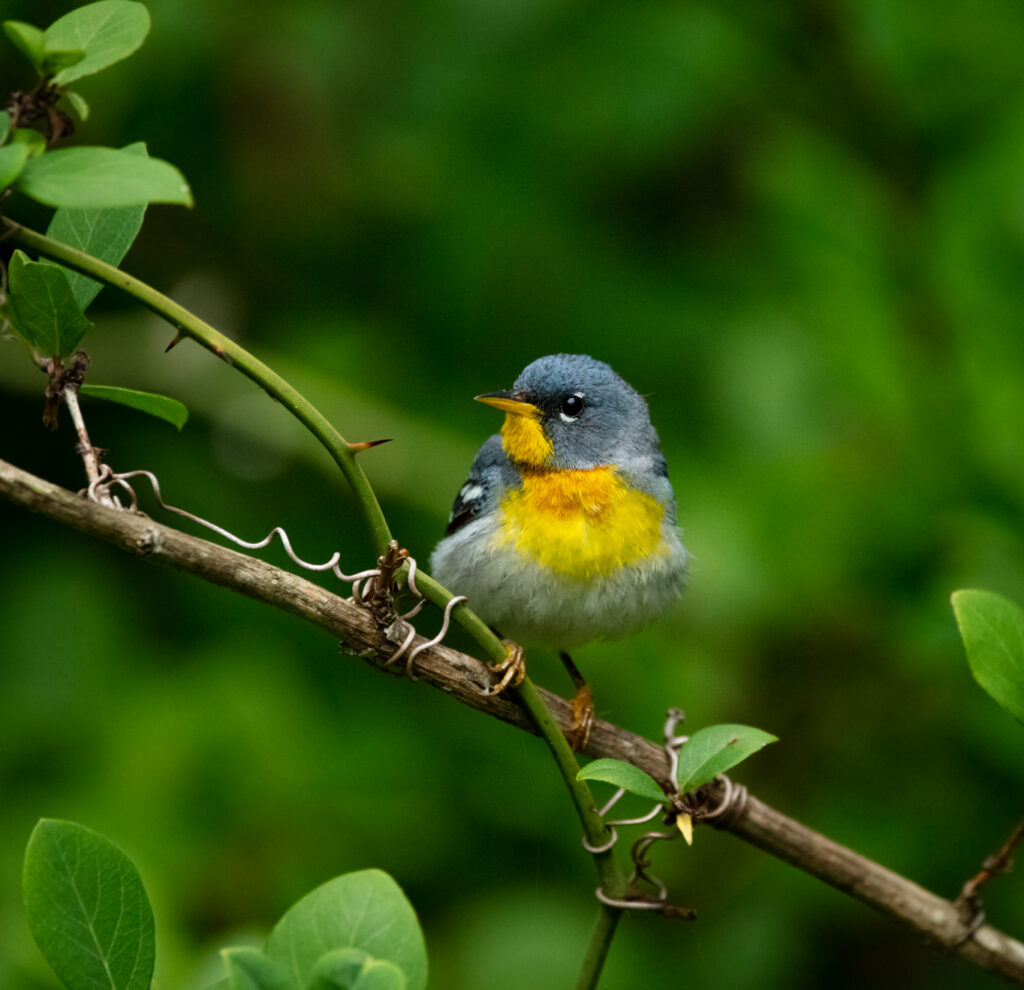
It was really cool to see the colorful little one flying around at eye level since normally these “warbler neck” inducing birds tend to stick to the high canopies of trees while searching for a meal.







Northern Parulas are almost entirely dependent upon either Spanish moss or “beard moss” for nesting sites. This is why they spend their breeding season along the coastal areas in the coniferous forests of southern North Carolina where Spanish moss growth is more abundant. During the spring and summer, Northern Parulas are commonly seen foraging in the forest treetops near lakes, ponds, streams, bogs and swamps as well as in parks, yards, orchards, and even our own gardens.
The habitat of Greenfield Park fits their needs perfectly with Spanish moss hanging from the branches and plenty of insects flying near the water.
Photos by @sally_siko of @birdwatching_nc
on the mighty @canonusa #5ds